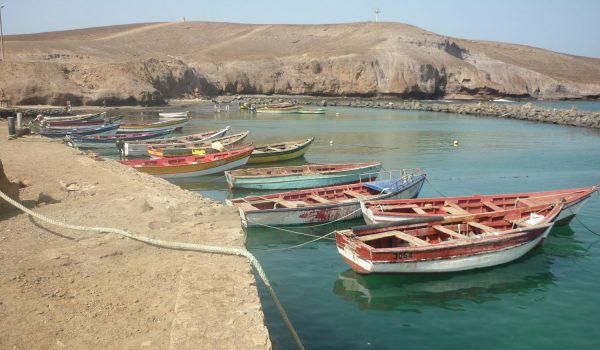Salinas de Pedra de Lume, situada na parte NE da ilha do Sal, com uma área de 40 hectares, é um local excecional formado na cratera de um vulcão extinto a 39 metros acima do nível do mar e 1500 metros de uma enseada abrigada. Em tempos a cratera esteve em contato com o mar pelo seu lado norte, por canais naturais, possibilitando a infiltração da água que, devido à evaporação, deixou um depósito de sal-gema calculado em mais de cinquenta milhões de toneladas.
Around this salt mine an industrial society with basic infrastructures such as chapel, school, maternity hospital and social canteen was developed. From this, the type of human settlement is visible, based on the industrial socio-economic divisions, manifesting itself in the different housing estates for the salt mine workers, the engineers and the chiefs who lived there.
ler maisA extração do sal foi o fator impulsionador para a ocupação e efetivação da ilha, tendo como mentor o abastado comerciante Manuel António Martins que, por volta de 1796, com famílias oriundas da Boavista e homens escravizados da costa ocidental, fixou-se na localidade de Pedra de Lume. Desde então, a ilha passou a ser procurada por navios de várias nacionalidades, principalmente do Brasil, para se abastecerem do “ouro branco”.
Este período áureo, no qual a exportação do sal marcou uma cifra de 30 mil toneladas anuais, foi interrompido em 1887, altura em que o Brasil tributou o sal estrangeiro como direitos proibitivos. Após esta pausa e em virtude de uma nova conjuntura (mercados africanos, disponibilidade de capitais), a indústria salineira conheceria uma nova alavancagem preconizada pela Salins du Cap Vert, que deixou uma marca indelével na paisagem local.
However, in 1963, the Democratic Republic of Congo became independent, compromising Cabo Verde's salt industry as a result of the nationalisation of trade in this country. Currently, the extraction of salt is mainly used to make beauty products and thalassotherapy, while the crater receives a large number of tourists annually.
Salinas de Pedra de Lume possui uma beleza paisagística excecional, conferida pelo mosaico policromático da cratera, que vai desde as várias tonalidades das marinas destacando-se o branco, vermelho, laranja, azul e roxo em consequência da sua composição química e o verde, que provém das plantas circundantes.
Tendo em conta, os valores que o Bem detém foi classificado como paisagem protegida, através do decreto-Lei 3/2003, de 24 de fevereiro, tendo como objetivo preservar os elementos naturais e culturais relacionados com a existência de uma caldeira de exploração do sal e que se ajusta a uma paisagem de beleza singular e valor ecocultural. Neste sentido, também foi classificado como Património Natural, Histórico e Cultural Nacional através da resolução nº 21/2012, de 24 de abril.
Integra desde 2004, a Lista Indicativa de Cabo Verde na UNESCO.
ler menos















